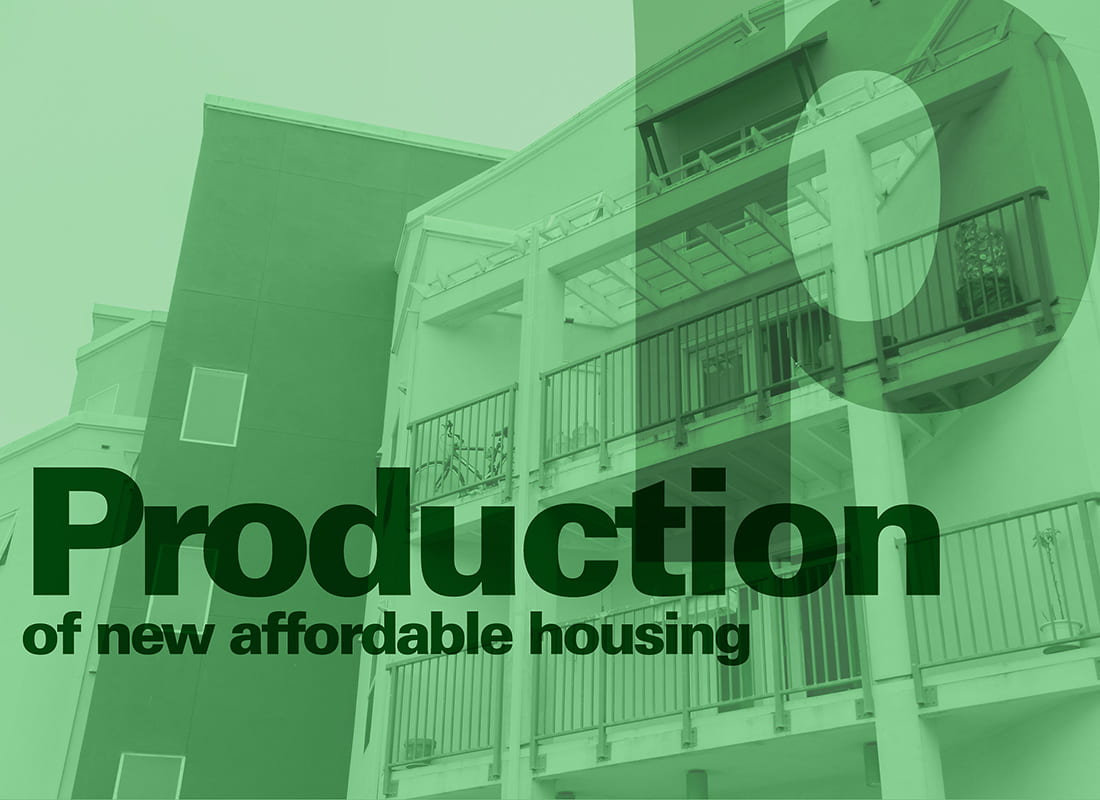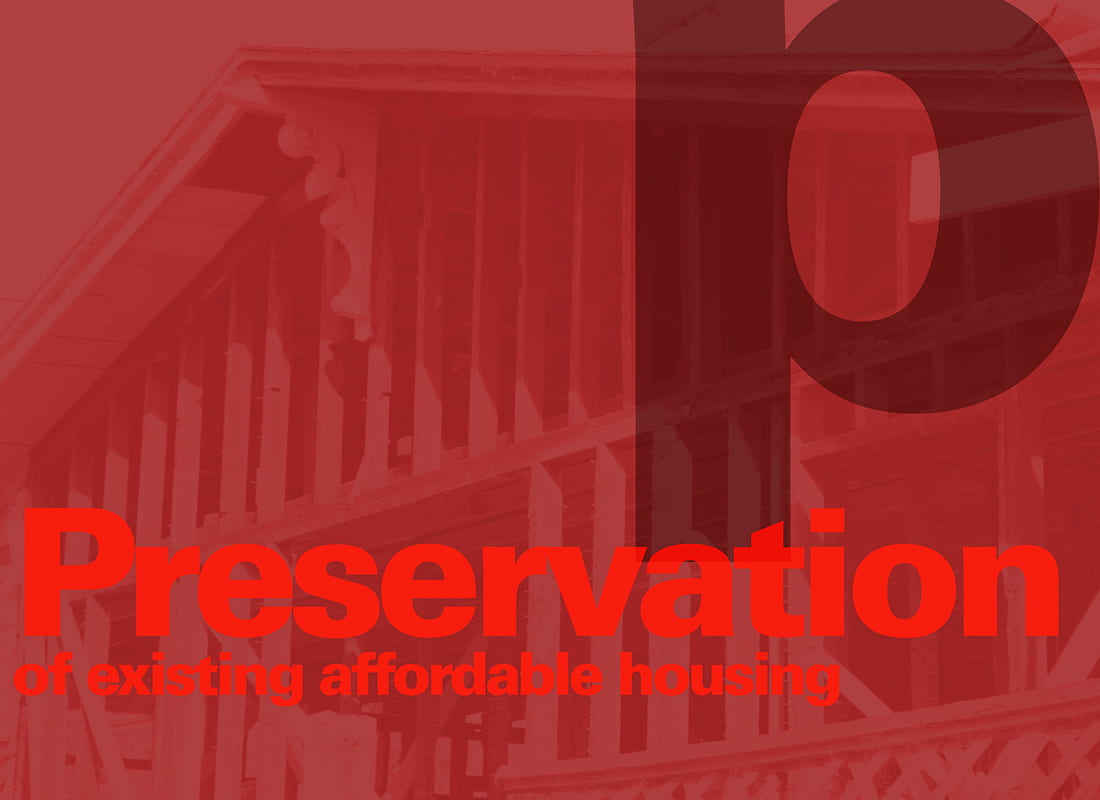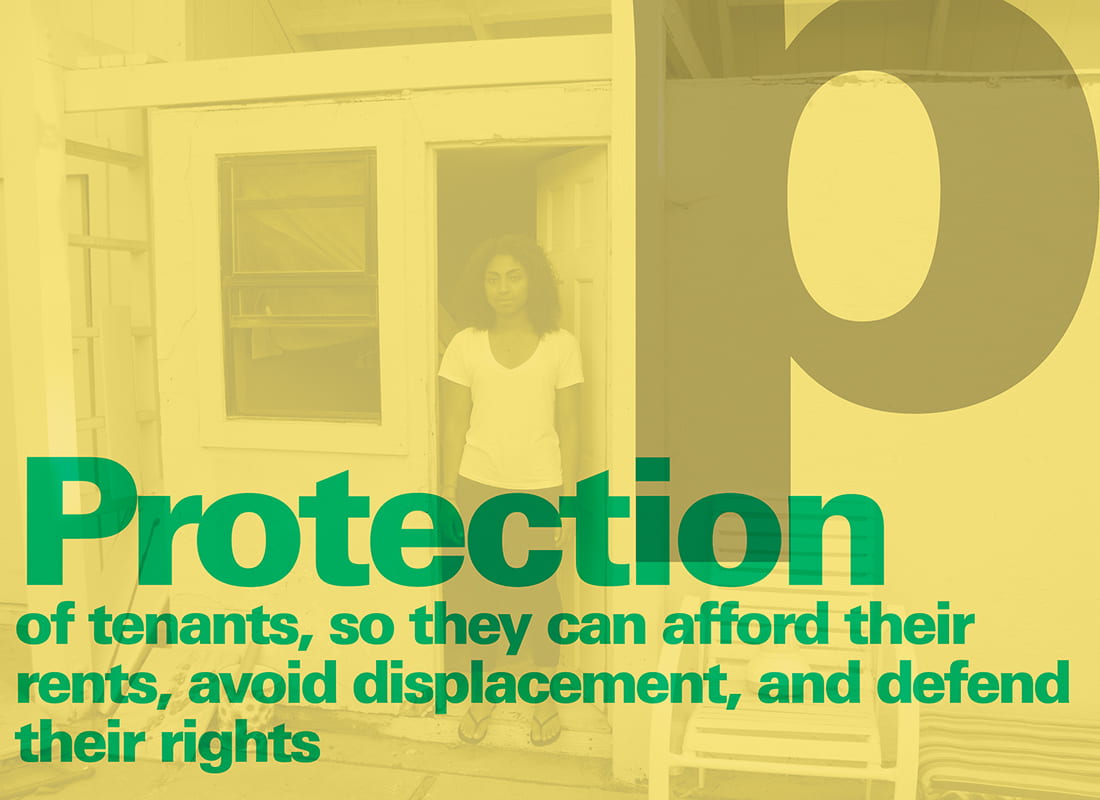Policy tools
The chronic lack of affordable housing in Santa Cruz is a multi-dimensional problem, with multiple roots and ramifications. As such it requires multiple solutions. We concur with the many affordable housing scholars, developers, and activists who have framed these solutions in terms of “the 3 P’s” that will be necessary to alleviate the crisis. This includes:
- Production of new affordable housing
- Preservation of existing affordable housing
- Protection of tenants, so they can afford their rents, avoid displacement, and defend their rights
Within each of the 3 P’s, there are a number of options communities can pursue, at multiple scales—from the city and county to the state and federal. Any effective housing platform will require some mix of local, state, and federal engagement —whether to finance new affordable buildings, create a community land trust, or to protect tenants facing discrimination.
In addition, the question of the timing of the initiative is crucial. For instance, since new affordable housing takes so long to finance, gain political support, and build, it is important in the short-term to preserve existing housing and protect tenants facing displacement. Indeed, if done in reverse, the displacement caused by lack of protection and preservation can wipe out any net gains made from building new affordable units. At the same time, over the longer term, increased production of affordable housing units will be vital to add supply in a rent-regulated market.
In the following pages, we lay out a few of the current policy and political options for each of the “P’s,” as well as some of the history behind them and debates surrounding them. Where possible, we discuss current ballot measures or political initiatives, locally, statewide, and nationally, that people can support and take action on.
Finally, in advocating action, we would add a fourth “P” to the mix: Politics. It is vital that the majority who are in need of affordable housing –renters, low and moderate-income homeowners, families, seniors, people with disabilities, workers, students—find each other and elevate their political voice. Whether through tenant unions, community-labor partnerships, schools, neighborhood groups, or statewide and national coalitions, now is the time for communities to come together, to collectively determine and push for what they consider the best solutions for our city, state, and nation moving forward.
Compare our policies to those of other bay area locations using The Urban Displacement Project at UC Berkeley’s interactive map.
The three Ps




